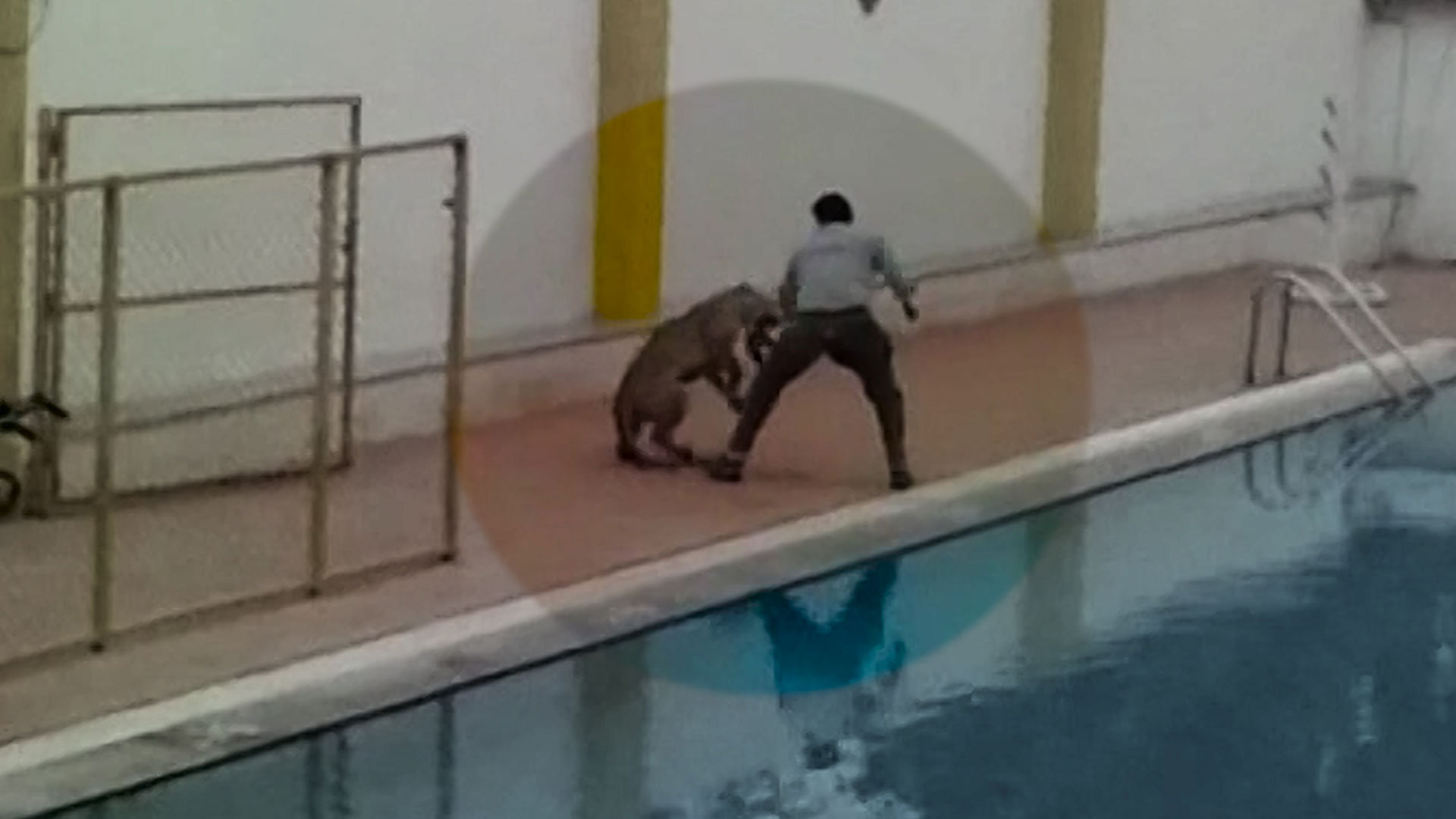Five Lessons to Be Learnt from Bengaluru Leopard Saga
Five lessons to be learnt from the Bangalore leopard Saga that kept schools closed for 10 hours.

advertisement
A male leopard entered a school in Bengaluru on Sunday and injured six people who tried to capture it. The effort that went on for 10 hours left a biologist severely injured. Rumours of another leopard in the vicinity kept the forest officials on their toes for the next two days and as many as 100 schools remained closed. So what is it that went wrong? The Quint dug deep into the incident to find the lessons learnt.
Overdose of Panic?
The school guard was the first to spot the leopard on CCTV cameras. Soon after, Forest Department staff armed with tranquilizer guns were called in and two teams were formed to capture the animal. Whitefield, the area where the incident unfolded, is an open forest area with a long history of leopard sightings. “Urban spaces have engulfed a lot of forests and leopards co-existing with humans is most usual. If the panic had not spread it is most likely that the leopard could have been guided back to its natural habitat,” says Vidya Athreya, a leading expert on human-leopard conflict.
Wildlife is Nightlife
Experts believe that rescue or capture operations that involve wild animals like leopards, big cats or hyenas are to be avoided in broad day light. It is dangerous both for the human population residing in the area, and for the animal itself. The Forest Departments are now equipped to conduct such operations and non-government organisations approach them from time to time for training and expertise.
Experts VS Administration
Biologist Sanjay Gubbi, who led the operation on request of the Forest Department, asked for an ambulance and a fire engine to be called. He requested that police enforce Section 144 which bans a crowd from gathering, as a precaution. He also wanted the swimming pool at the school to be drained so that a groggy leopard would not fall in and drown after being tranquilised. None of his requests were met.
Who Allowed the Media?
A desperate and scared wild animal looking for a hide-out and a rescue team running all over is dramatic footage, but the presence of over-enthusiastic photographers ready to do anything for the ‘best shot’ only makes the situation more dangerous.
Crowd-Chaos-Catastrophe
The presence of a crowd is another pitfall. Onlookers and spectators shouting, whistling and clapping made the situation worse. Section 144 that prohibits an assembly of more than ten people in an area was not declared in this case. The protocol which says it has to be initiated by the Forest Department to be then taken into consideration by the local administration is not clear to all parties.
(At The Quint, we question everything. Play an active role in shaping our journalism by becoming a member today.)